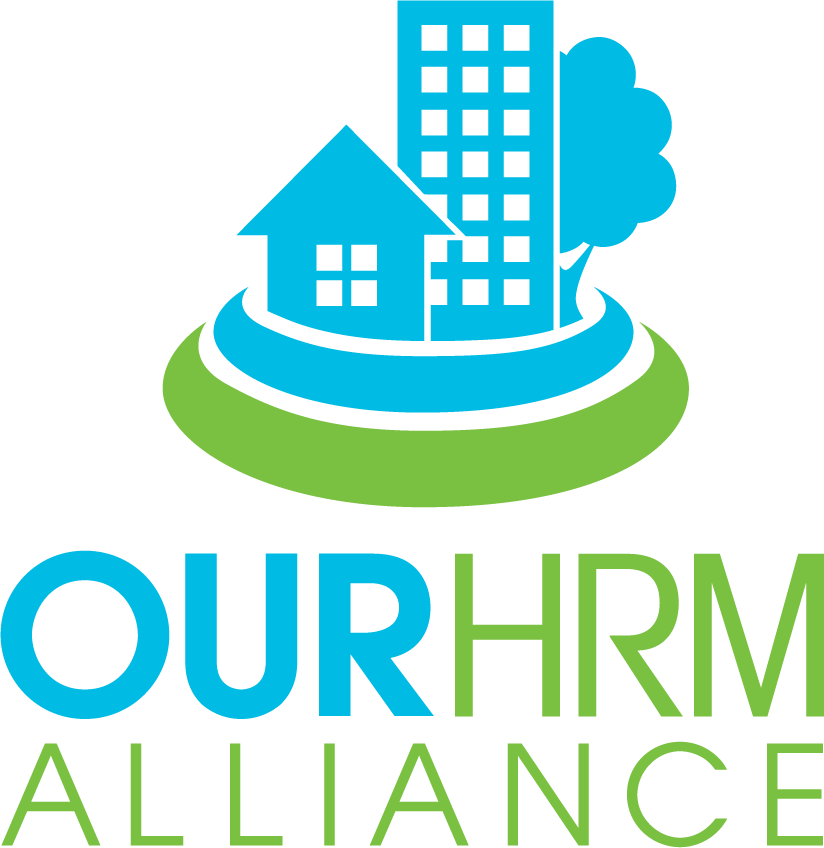
Regional Plan Amendments: Community & Environmental Priorities
This briefing outlines six key amendments from Our HRM Alliance, a coalition of over 60 community groups, organizations and Business Improvement Districts representing thousands of HRM residents. Together, we are calling on Council to reflect strong public interest in climate-conscious, fiscally responsible, and community-oriented planning. These recommendations urge Council to ensure the Regional Plan serves people and planet — not developers.
1. Remove Provincial Special Planning Areas (SPAs) at Sandy Lake and Highway 102 West Corridor (BMBCL).
We are calling for Sandy Lake and the Highway 102 West Corridor (Blue Mountain-Birch Cove Lakes) to be removed as Special Planning Areas (SPAs). While SPA designation is being forcibly applied by the province, we are calling on HRM to show leadership, stand up for our community needs and reject these inclusions in our Regional Plan.
These are ecologically vital landscapes that:
Store carbon and purify water
Mitigate flooding, erosion, and wildfires
Provide essential habitat and recreation areas
Align with the long-term vision for protected wilderness parks
Pushing development here means massive infrastructure costs outside of the Urban Service Boundary that taxpayers will bear. It threatens our health, our ecosystems, and our wallets. We will take this fight to the Province — but we need you to stand with us.
The Province is building a city we don’t want to live in. Don’t let them.
2. Strengthen and enforce the 30m Buffer for Wetlands, Watercourses and Coastal Areas
We strongly support the inclusion of a 30-metre buffer for wetlands, watercourses, and coastal areas — but this protection is weakened by vague language that states developers can “relax” these restrictions if they impede “reasonable” development. This is unacceptable language to include, let alone leave undefined, and showcases heavy preferential treatment to developers over the environment and residents.
We urge you to:
Remove language that permits wetland, watercourse, and coastal buffers to be ‘relaxed’ or considers developments that are confined by ‘reasonable use,’
Eliminate provisions that allow Development Agreements to override the 30-metre standard.
Clearly define and make publicly transparent any exemptions to this buffer, with more stringent approval processes.
We also request that lots from prior to 2006 that have yet to be approved for development have the 30m buffer apply to them as well.
If development can’t happen without destroying environmental buffers, then it shouldn’t happen there. These areas protect people and property from disaster, save us money and allow for recreation, on top of being key ecosystems and habitat — that’s worth defending.
3. Link Urban Service Boundary Expansion to Growth Targets
The Plan sets a target for 75% of new housing within the Urban Service Boundary (USB) — but offers no enforcement mechanism, with language pointing to the USB being expanded or redrawn in the future. Without that, sprawl is inevitable. Future consideration of Urban Service Boundary expansion must only occur after a minimum of 75% of new housing growth has been achieved within the existing Urban Service Boundary.
This ensures new homes are built in already-serviced areas, saving taxpayer money and preserving green space. Housing areas that already exist outside of the service boundary should also be serviced prior to building new areas that need servicing.
Return to Recent Work & Statements
4. Require Halifax Green Network Plan (HGNP) to Guide Phase 5 Planning
Currently, the Regional Plan states that HRM “may consider” the Halifax Green Network Plan. While the proposed amendment to “shall consider” was withdrawn, we would like there to be inclusion of this stronger language to support implementation of the HGNP in Phase 5 — the upcoming Suburban Plan.
The HGNP maps our ecological networks and identifies green infrastructure needed for climate resilience, biodiversity, and public health. It must guide how suburban communities grow.
5. Strengthen Environmental Commitments and Expert-Led Planning
Many EN policies are filled with “may consider” language — making them meaningless. We call for:
EN-5: Change “may undertake studies” to “shall undertake studies” to identify climate-critical lands. Add a clear commitment to public consultation and environmental expert leadership in decision-making.
EN-7: Change “may” to “shall” to guarantee ecological connectivity is protected now. Urban corridors are rapidly closing, and this policy ensures we don’t lose what we can’t get back.
EN-8 & EN-16: Add language that any future amendments to environmental policies must aim to strengthen or maintain protections — not weaken them. Otherwise, amendments could be made to favour irresponsible development.
This prevents quiet rollbacks and keeps policy aligned with climate and biodiversity goals.
6. Push Back Against “Develop-at-All-Costs” Mandates
IM-9(b) prioritizes “safe, sustainable, and affordable housing” — but none of these terms are defined, and this clause is being used to push through any development without proper scrutiny.
This is not how we build strong, inclusive communities.
We call on Council to:
Define “safe, sustainable, and affordable” in a meaningful way
Amend the policy to reflect climate and community-conscious decision-making
The housing access we need isn’t just square footage — it’s access to services, green space, clean air, and safe transportation. Council must uphold those standards, not bulldoze them.
We trust that HRM Council will continue to lead with integrity and vision. The people of HRM are paying attention. We want cities that are sustainable, equitable, and rooted in care for the land and communities we call home. Let’s build that future — together.
Sincerely,
Kathleen Hall, on behalf of Our HRM Alliance
Chair of Our HRM Alliance

